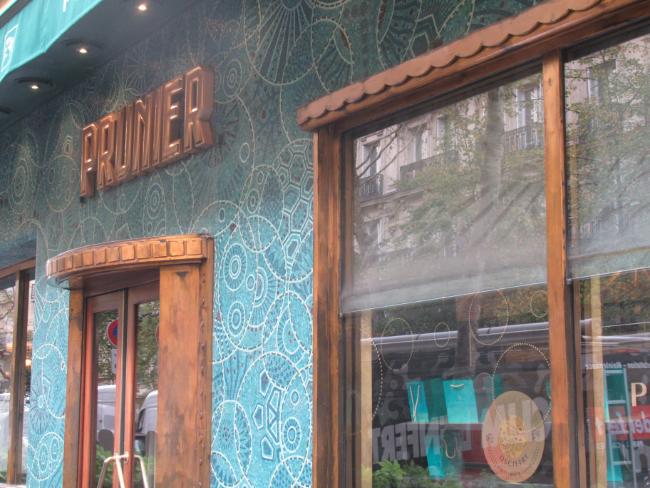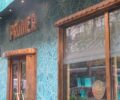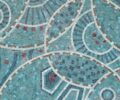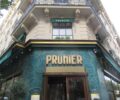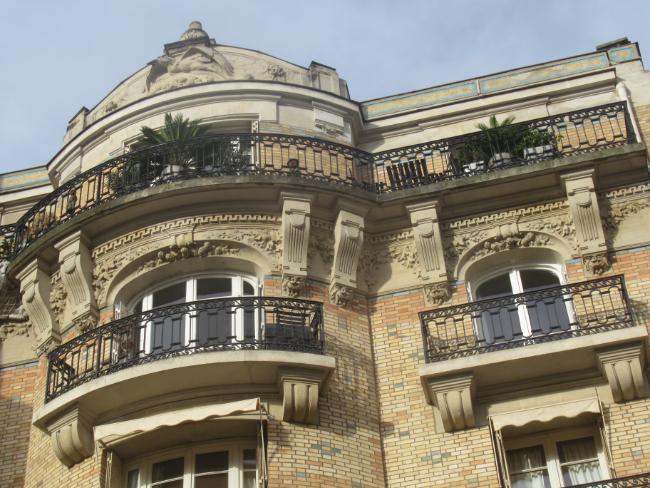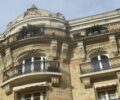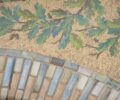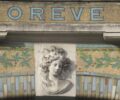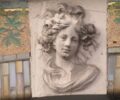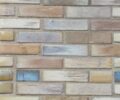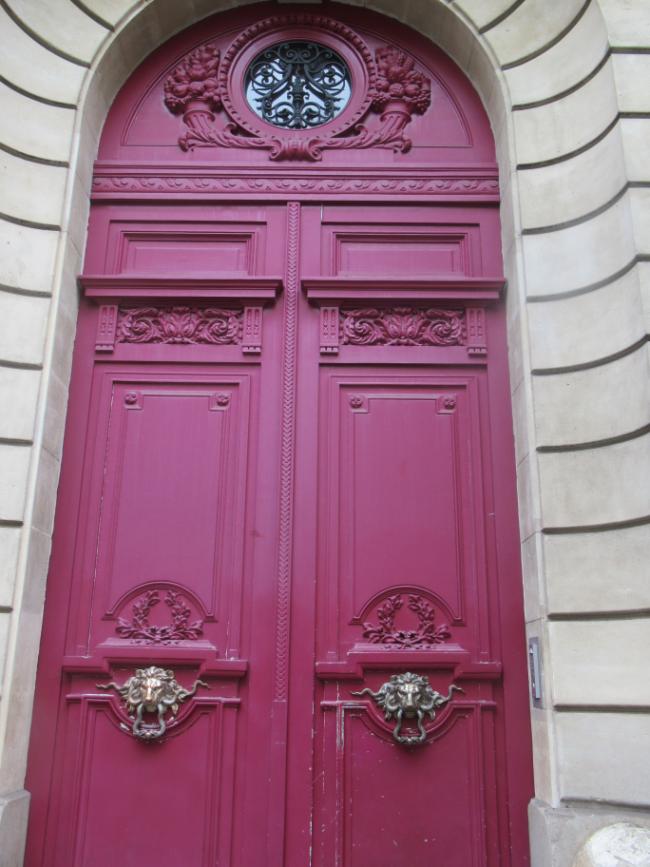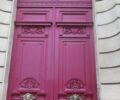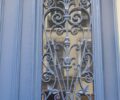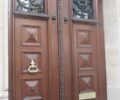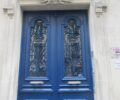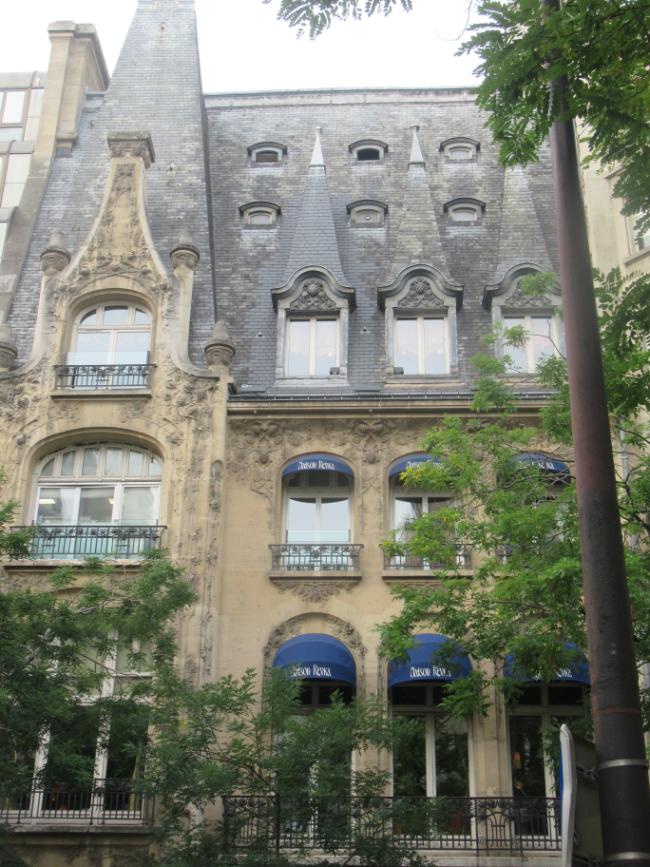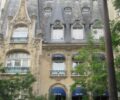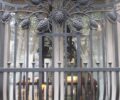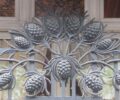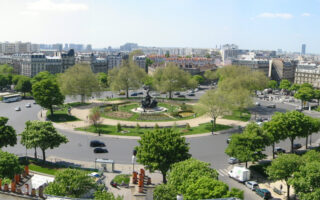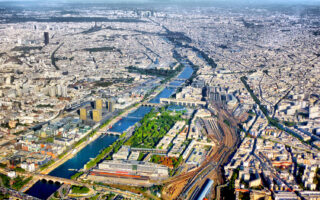Flâneries in Paris: Art Nouveau Discovery near Place Victor Hugo
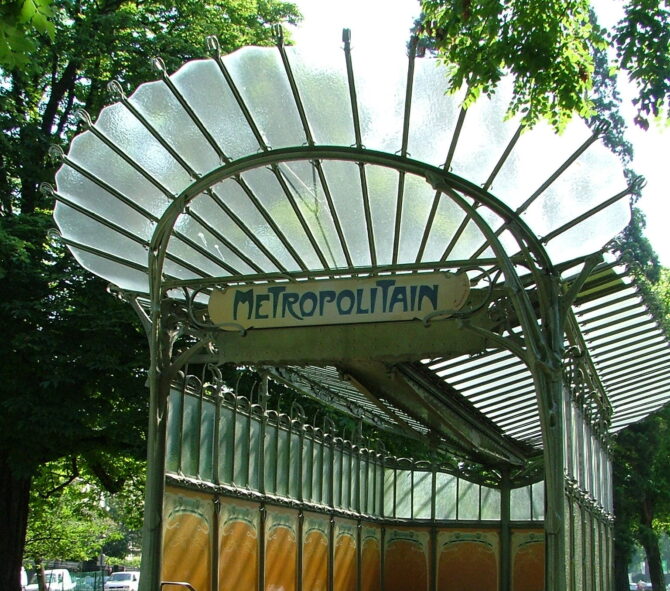

- SUBSCRIBE
- ALREADY SUBSCRIBED?
BECOME A BONJOUR PARIS MEMBER
Gain full access to our collection of over 5,000 articles and bring the City of Light into your life. Just 60 USD per year.
Find out why you should become a member here.
Sign in
Fill in your credentials below.
This is the 23rd in a series of walking tours highlighting the sites and stories of diverse districts of Paris.
Art Nouveau, Art Déco – which is which and where in Paris could I find buildings in those styles? A little research told me that a stroll down the Avenue Victor Hugo would lead me to some interesting examples, but first I had to negotiate the underground maze which is the Étoile metro station and try to surface in the right place. Exit 8, Avenue Foch did the trick.
The gold and turquoise façade of the Café Prunier at number 16, Avenue Victor Hugo stood out as soon as I saw it. Its design dates from 1925, when the Art Déco movement was really taking off and I immediately spotted two features I’d read about. The large rectangular windows, their shape a little softened by carved wooden surrounds, were an example of geometric shapes which replaced the curves and flourishes of Art Nouveau. And the stunning turquoise mosaic tiling covering most of the building’s front was certainly both bold and elegant, two characteristics sought by Art Nouveau designers. They favored animal motifs too and here fish shapes swirled among the decorative circles and pentagons.
Further along the avenue, came a mix of sophistication and the everyday. Monoprix was there, but then so were the jewelers Godenot Pauliet, with a Rolex-themed window display. Alongside Zara and Petit Bateau was what might be the most literary bus stop in Paris, the “Victor Hugo Paul Valéry” stop, named after two of France’s best-known writers, the 19th-century novelist who brought us Les Misérables, and the 20th-century poet who is still one of French schoolchildren’s must-study authors and who once wrote that “poetry is to prose as dancing is to walking.” The 16th arrondissement oozes culture and sophistication.
The next part of the plan went awry, a reminder perhaps that a flânerie should not be over-organized. I crossed the Place Victor Hugo and picked my way through a maze of elegant little streets towards the Porte-Dauphine metro station. I’d seen pictures of its beautiful Art Nouveau framework, the long wrought-iron “stems” of lily-of-the-valley which hold up the glass canopy roof, the abstract flower and leaf patterns so delicately “woven” from the dark green metal. But, alas, works were in progress and a tarpaulin covered the whole station entrance. It’s classified as a monument historique, so I know it will be unveiled again eventually and meanwhile I’ll go and have another look at the other two stations in this same exuberant turn-of-the-century style, Abbesses and Châtelet.
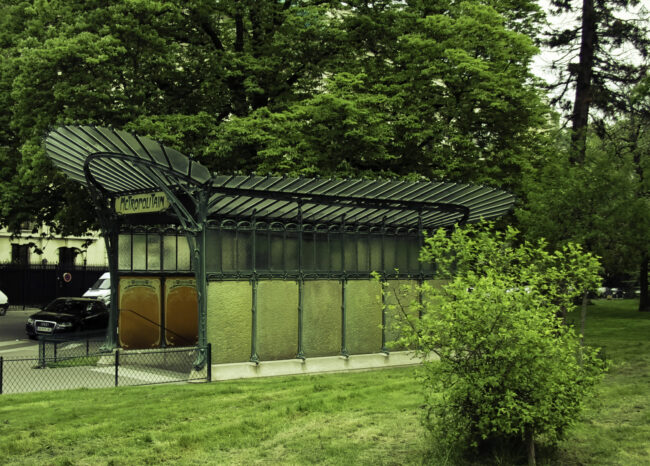
Porte Dauphine station, designed by Hector Guimard. Photo credit: Unuplusunu / Wikimedia commons
Rue de la Pompe beckoned, because at no 25 was a carefully preserved beauty from 1910, the Le Bon restaurant, which more than made up for the previous disappointment. Its façade was an exuberance of Art Nouveau features. A background of ochre and pale blue glazed bricks covered the front of the building, topped by a mosaic band where oak leaf garlands lay against a golden background. Designs from this period often took inspiration from nature and these interlacing twists of foliage were typical. So too was the central carving of a young woman’s face, her hair a tangle of curls, flowers and ribbons. Womanhood is another Art Nouveau theme.
Above the ground floor rose several storeys whose sandy-colored bricks were relieved here and there by splashes of pale blue, giving the whole building a unity. On each of the four floors, fruit and flower motifs were carved into stone balconies, each with their own set of wrought-iron railings. The designs up each side of the façade were rectangular, but in the middle of each floor a curved balcony jutted out. The design was playful, yet still orderly. It all reminded me of those other areas of French life – scarf-knotting, table-setting – where a there’s a casual “je ne sais quoi” and the result is nonchalantly perfect.
Retracing my steps up Rue de la Pompe, I started to notice the doors. So many beautiful doors, each sturdy yet graceful. I found a heavy, polished wooden one with a row of four square panels up each side, topped by a square wrought-iron design of curls captured within a geometric space. The brass knocker and letterbox were placed on opposite sides, but one a panel higher than the other, so nearly – but not quite – symmetrical. Perfect! Then came a series of beauties: a plain iron gate set back in an elegantly carved stone surround, a simple wine-red paneled door with a central golden lion door-knocker and above him, a carving of two symmetrical twigs, curving up and round to meet exactly in the middle of the door.
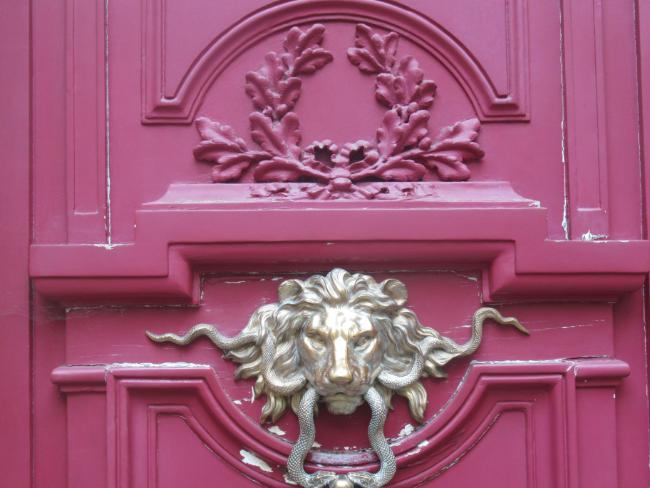
Door knocker on red door. Photo credit: Marian Jones
As I lingered to take photos, a man leaned his bike against the wall of one house and let himself in. When he opened the door, a beautiful passage opened up, with stone pillars on either side, plain round columns, yet topped with an abundant display of chiseled fruits, flowers and curls of stone. The walls were plain stone, but the floor was tiled, regular shapes in a not-too-uniform pattern, a stylishly colored mix of ochre, terracotta and pale and dark blue. I admired the studied elegance and wished I could have seen behind more of those doors.
My next stop was Avenue Raymond Poincaré, at no 59, the Maison Revka, another stunner from the late Art Nouveau period, built in 1911 and full of splashes of unexpected creativity. The doors and windows of the first two floors are all set into recesses with curved tops, each surrounded by an arc of carved plant designs, the whole being an arresting sight from across the road. When I got a little closer, I noticed that each set of iron balcony railings was decorated by curved stems and perfectly sculpted iron fir cones, all drawn together by the repeating pattern at each window. Then came another surprise because on the third floor things suddenly turned gothic, with triangular slate shapes pointing upwards like witches hats, reminiscent of those topping medieval buildings like the Conciergerie.
Soon, I was back in the Place Victor Hugo and took a moment to give it a proper look. An imposing stone church had the wonderful name of the Monastère Notre Dame de la Présence de Dieu, and a sign listing all the weekly services informed me that “Le lundi est un désert. L’Eglise est fermée,” which literally means “Monday is a desert. The church is closed.” A plaque at number 10, where Maurice Schumann was born, listed his achievements: wartime spokesman for Free France – he broadcast from the BBC in London throughout the occupation – statesmen and member of the Academy Française. It was another reminder that the 16th arrondissement has been home to many of France’s most illustrious citizens.
Returning up the Avenue Victor Hugo, I had the sudden thought that lunch at the Café Prunier would be very pleasant. I lingered a moment over the menu outside with its lobster, langoustines and selection of oysters. But the prices were a little steep to justify a spur-of-the-moment decision and it would surely be nicer to return à deux for a special celebration. So, after another moment admiring the turquoise tiling and the window display with its bluey-green stone carved fish, I went instead to the Café Poète a few doors down. It’s presumably named after the poet Valéry, and it was just opposite “his” bus stop. And there, over a very tasty poulet à la sauce normande, I thought back over the art and architecture I had seen in this little corner of the 16th arrondissement.
Lead photo credit : "Dragonfly" Art Nouveau entrance designed by Hector Guimard. Photo credit: Peter Clericuzio/ Wikimedia commons
More in Flâneries in Paris, walking tour
